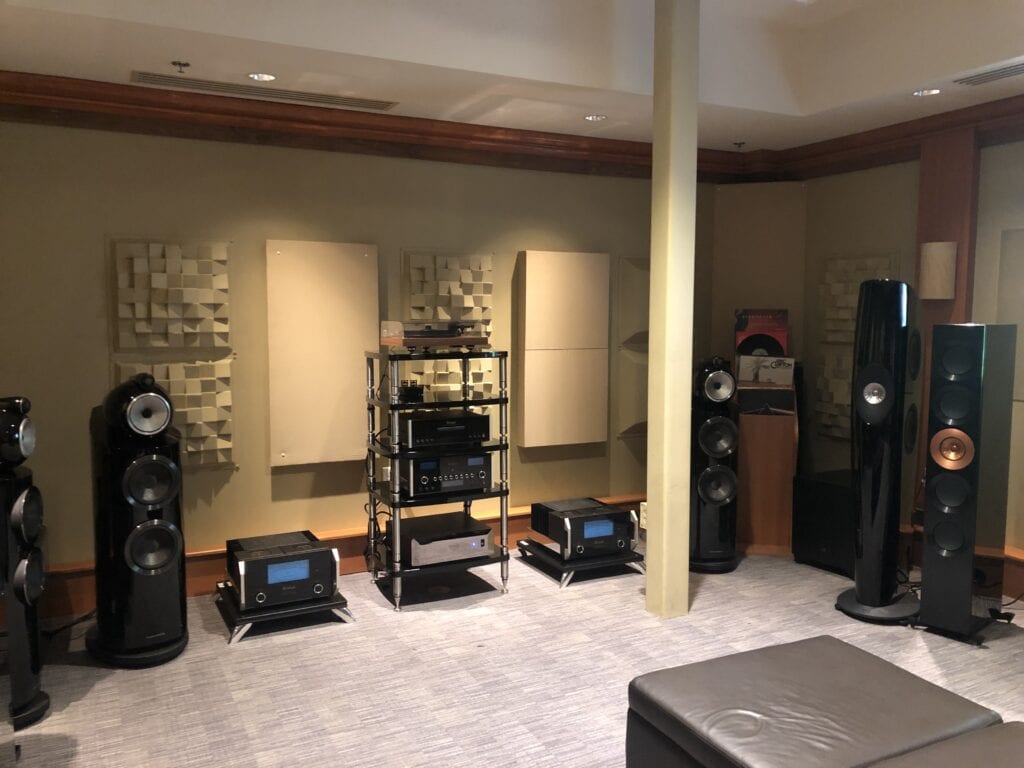TV or projector and screen
A stunning picture is the goal of any home theater. I recommend buying a set with 4K video resolution, and if you want the ultimate in picture quality and your budget allows it, buy an 8K set. A feature called HDR (High Dynamic Range) is a necessity for the best possible picture.
1080p resolution (Full HD) has 1920 by 1080 pixels and gives a great picture, but 4K resolution is a step up, boasting 3840 by 2160 pixels.
However, if you’re looking for the sharpest picture currently available, 8K UHD is what you need. They also have an astounding upscaling capability, which means they can take a lower quality image and raise the quality up to 8K resolution (7680 by 4320 pixels).
As far as the type of TV you pick, LCD/LED TVs provide excellent pictures. OLED (Organic Light-Emitting Diode) sets are the latest in display technology. They have a better viewing angle and consume less power. The downsides are that they are more expensive and can suffer from screen “burn-in,” which means images may be permanently etched into the display.
That old adage “bigger is better” is certainly applicable to the display component of a home theater system, provided you have ample room. The formula for determining screen size is Viewing distance (in inches) /2 = recommended TV size. So, if you sit 10 feet from the TV, that would be 120 inches divided by 2, which equals 60 inches. Screen size is measured diagonally (corner to corner).
If you are wanting to dedicate an entire room to your home theater you should consider a projector and screen. Today’s newest 4K projectors produce dazzling pictures and are quiet. Typically, the projector is installed in the ceiling at the rear of the room, and the screen remains stationary or is made to hide away like a motorized window shade. Screen sizes go up to 200 inches. Use the same distance formula for optimum picture quality and reduction of eye strain.
Sound system
Equally, and perhaps more important than the display device chosen, is the hardware that provides the sound.
The most basic system would be a two-channel “stereo” receiver with left and right speakers. This setup is called 2.0 (two channels). This has been the listening standard for decades. Technically, this is not a home theater system; you will need a center channel and another speaker. This is 3.0. For true “surround sound,” you need five speakers, front left, front right, center, rear left, and rear right.
Subwoofers amplify low frequencies and produce that rumbling you can see and feel. If you are on a limited budget, a subwoofer added to the speaker system will give more of a theater experience. You now have what is called a 3.1 speaker system; the .1 denotes a subwoofer. Many people with a large room incorporate more than one subwoofer in their surrounding systems.
A basic “surround” system would be 5.1, which is FL, FR, LR, LR, center speaker, and subwoofer. Dolby 5.1 was state-of-the-art for many years. Now, however, the engineers at Dolby figured out a way to make what has been coined, “3D surround sound” via a new technology called Dolby Atmos (“Atmos” as in Atmosphere.) It creates a layer of sound that not only hovers above the audience, it hovers in different areas above the audience. And it does it so well, you can actually pinpoint specific sounds in specific places in the air. A good example of how this system performs in a home theater setup might be the 2017 movie, “Dunkirk”. (In this example, the home theater system Dolby 5.1.2, where the “.2” = two upward-firing Dolby Atmos speakers.)
If you do not have much space, you want to consider a soundbar, which fits under your TV. It has a left, right, and center channel. Most soundbars will let you add additional speakers, including a subwoofer.
Speakers play a vital role in any sound system. You should match the speakers to the sound system. The easiest way to do this is to buy a “system in a box.”
Many audiophiles prefer to use an integrated amplifier (which has a built-in preamp) or use a separate preamp, to which everything is connected, and a discrete amplifier.
Instead of cable or satellite, many are switching to streaming devices, which provide you with a plethora of programming choices.
There is also the option of wireless speakers which may be more aesthetically pleasing.
Price and personal taste will dictate which type of TV and audio system you purchase.
My best advice for picking a particular product is to read consumer reviews before you make a purchase.











